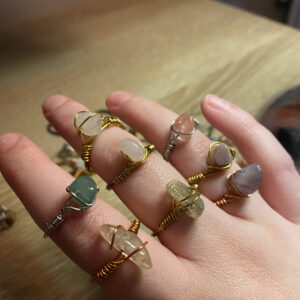Seasonality shapes the heartbeat of the jewelry industry. From spring proposals and summer weddings to holiday gifting and winter glam, consumer preferences shift with the calendar. For jewelry retailers, navigating these changes with a smart stocking strategy is not only profitable it’s essential.
This article outlines practical, data-informed strategies for jewelry shops and retailers to manage inventory effectively throughout the seasons, with a focus on staying agile, reducing waste, and maximizing sales.
Jewellery Shop Strategies: Stocking Smart for Seasonal Shifts

-
Know Your Calendar: Map Out Peak Seasons
Every jewelry shop needs a clear view of its seasonal high and low points. These may vary slightly by region or target demographic, but common industry peaks include:
- Valentine’s Day (February) – Rings, heart pendants, and red gemstone jewelry
- Mother’s Day (May) – Pearl earrings, birthstone necklaces
- Wedding Season (May–August) – Bridal sets, bridesmaid gifts, cufflinks
- Holiday Season (November–December) – Luxury pieces, gift sets, limited-edition collections
By mapping these out ahead of time, retailers can prepare in advance with promotional campaigns, stock planning, and supplier coordination.
-
Track Data, Not Assumptions
Rather than relying solely on intuition, jewelry retailers should use data analytics to assess past performance and forecast demand:
- Sales by product category and time period
- Customer behavior patterns (e.g., peak online traffic hours)
- Return rates by season
- Popular styles in previous quarters
Using POS data and e-commerce reports can help determine which SKUs should be restocked, phased out, or featured in marketing.

-
Diversify Without Overextending
Seasonal shifts often inspire shops to expand collections, but more isn’t always better. Instead:
- Curate a versatile core collection that performs year-round.
- Rotate in seasonal styles (e.g., snowflake pendants in winter, floral themes in spring).
- Focus on multi-purpose pieces that can be dressed up or down.
Balance is key avoiding both overstocking and underwhelming variety.
-
Collaborate Closely with Suppliers
Strong supplier relationships make seasonal planning smoother. Look for partners that offer:
- Short lead times for quick restocks
- Flexible MOQ (minimum order quantity)
- Ready stock availability for last-minute campaigns
Regular check-ins help align production capacity with promotional calendars.

-
Capitalize on Micro-Events and Trends
Beyond major holidays, savvy retailers tap into micro-moments such as:
- Graduation season (May–June)
- Back to school (August–September) for teen-friendly accessories
- Fashion Week influences (February, September)
Additionally, trending themes like astrology, vintage revival, or sustainability can provide hooks for seasonal capsules.
-
Plan for Returns and Exchanges
Post-season returns are a reality especially after gifting periods. Prepare by:
- Creating a clear return policy and training staff accordingly
- Stocking some classic bestsellers for easy exchanges
- Offering “store credit” incentives to retain revenue
Anticipating return patterns allows better end-of-season inventory control.

-
Leverage Omnichannel Inventory Tools
Integrating online and offline inventory systems is crucial for seasonal shifts:
- Use inventory management software to track movement across locations
- Enable “buy online, pick up in store” to drive holiday foot traffic
- Synchronize warehouse and store stock for smoother fulfillment
An agile system prevents missed sales opportunities and ensures a seamless customer experience.
-
Bundle Smart to Move Inventory
Create value-based bundles during slower periods:
- Combine slow-moving items with seasonal bestsellers
- Offer tiered pricing on sets (e.g., buy 2 get 1 free)
- Curate gift boxes with a festive or themed design
Bundling helps increase average order value and clears aging stock without heavy markdowns.

-
Monitor Competitors and Social Media Signals
Trends often surface first on platforms like TikTok, Instagram, and Pinterest. Use these insights to adjust seasonal strategies:
- Are chain-link necklaces trending again?
- Are influencers showing layering sets in summer or bold cocktail rings in winter?
Social listening and hashtag tracking can help refine product presentation and timing.
-
Create Pre-Season Hype
Build momentum ahead of seasonal launches:
- Use email campaigns to tease upcoming collections
- Share behind-the-scenes production content
- Collaborate with influencers to create early buzz
This primes your audience and increases the chance of a strong launch.

-
Reevaluate After Each Season
After each seasonal push, conduct a stock audit:
- What sold well? What underperformed?
- Were you over or understocked?
- How did the marketing campaigns align with product movement?
Use these learnings to fine-tune your next seasonal plan.
-
Plan Promotions Strategically
Discounts should align with the season, not just calendar markdowns:
- Offer “early bird” pricing before peak gift-buying times
- Run flash sales in post-holiday lulls to clear excess inventory
- Create urgency with “limited stock” or “last call” campaigns
Strategic promotions boost sales without diminishing brand value.

-
Offer Seasonal Customization Services
Let shoppers personalize gifts during key holidays:
- Engraving services for names or dates
- Custom gemstone selection (e.g., birthstones)
- Build-your-own bundles for special occasions
This increases engagement and makes each purchase more meaningful.
-
Don’t Forget Packaging and Presentation
Seasonal appeal isn’t just about the jewelry itself:
- Use limited-edition boxes or pouches for the holidays
- Add seasonal touches like ribbons or themed inserts
- Offer free gift-wrapping as a value-add
Presentation enhances perceived value and encourages repeat purchases.
Smart Stocking is Strategic Stocking
A jewelry retailer’s success isn’t just about having great designs it’s about having the right pieces, in the right quantities, at the right time.
By combining data, supplier collaboration, and market awareness, jewelry shops can master the seasonal cycle with precision. Smart stocking reduces risks, builds brand loyalty, and ensures that when the moment comes your store is ready to shine.
Stay ahead of the seasons, and the customers will follow.
